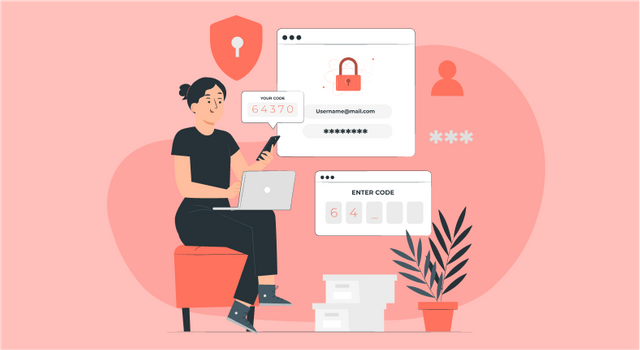A user authentication programme makes sure users are authenticated properly before they can access a programme or service. The software makes it simple for organisations to confirm a user's identification and issues them credentials only after verifying their legitimacy. To further comprehend, let's delve in.

Human-computer interactions can allow or prevent cyberattacks. Business enterprises secure web applications and allow access to authorised users. Authentication software is needed.
User authentication software prevents unwanted network access. Users who request network, system, device, or resource access are identified. User authentication software protects sensitive data from hackers. Users are asked for individual passwords to access multiple systems. If a user lacks login rights, authentication fails.
User authentication software covers user registration and login attempts. It validates user responses and determines system access. Single sign-on, multifactor authentication, identity access management, etc. are all authentication approaches. We'll explain authentication below.
Authentication software's importance

User authentication software secures networks and allows authorised users or processes to access computer systems, databases, networks, websites, and other applications and services. The method protects information and finances from hackers, fraud, and cyberattacks.
The following sections discuss user authentication software.
Security and Privacy
Using unique passwords and usernames, user authentication software helps businesses safeguard client identities, confidentiality, and privacy. The procedure helps online transactions and systems that require a username and password. Activity fails if user can't log in.
User authentication software verifies users' identities to guarantee only genuine users can access systems. The approach simplifies user identity management in corporate systems.
Safety Measures Against Theft
User authentication software prohibits unauthorised access. When an attacker has access to a person's account information, they can steal or change their identity. Multiple websites need client details to function. Websites need an access control system to secure data. Easy-to-setup user authentication software helps firms secure data.
Variable security
Time and technology have changed control systems. Passwords and PINs aren't the sole alternatives for securing data. User authentication software includes identity and password management tools. Authentication software helps businesses and their clients and customers keep their information protected.
Authentication methods
Authentication is cybersecurity's strongest protection. The method verifies users' identities. Authentication is the best technique to confirm digital identification, which allows users to access or perform tasks on organisational systems and resources.
Fingerprints and passwords are both used to confirm user identity and access user access management activities. The process protects security and data.
Below, we'll explore authentication types.
Single-factor Authentication
Single-factor authentication requires one factor to access systems. Password, username, code, or pin number are verification factors. Single-factor authentication systems are versatile for businesses.
Single-factor Authentication is the least secure because it only requires one factor. So, phishing, guessing, and keylogging are possible.
Two-factor Authentication
Two-factor authentication strengthens security by adding a second element. The extra step verifies the user's identity and thwarts hacker attacks. Users must supply primary authentication credentials and secondary identifying information.
Secondary verification is difficult since the user must offer something unrelated to the system. One-time passwords from authenticator applications, a phone number or device that receives a push notification or SMS code, voice recognition, fingerprint, or face ID are secondary factors.
Two-factor Authentication reduces system risks since an invalid user is unlikely to have both authentication factors.
Multifactor Authentication
Multifactor Authentication leverages system-relevant factors to authenticate users. The security technology verifies user identities using biometrics, supplementary passwords, device-based confirmations, geolocation, or behavior-based information.
Multi factor authentication software protects businesses' systems with different security mechanisms.
Summing It Up
User authentication software authorises credentials during interactions to ensure system security and network access. Authentication prevents unwanted access to systems and allows only valid users to access associated resources.
NinjaAuth by 500apps is a single sign-on solution that helps secure the system. The programme assures data security and boosts team efficiency. The software offers a centralised access management solution for all apps. NinjaAuth is your company's best single sign-on solution.